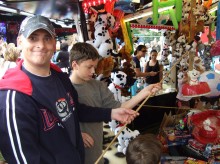Two years ago, I was interviewed by Huseyin Djemil for the Towards Recovery Journeys Podcast. Towards Recovery is a recovery community in Henley-on-Thames that Huseyin founded back in 2012. I edited this interview into 12 film clips and last week I posted them into the Recovery Voices section of this website. Here is one of the edited films which relates to Natalie, the young lady I first met back in 2000 and who inspired me to start writing stories about recovery.
David describes meeting ‘Natalie’, a former heroin addict, in his early days of working in the field. He reads a section of her Story that is posted on the his Recovery Stories website.
‘There were about fifteen people in my first group session, one of whom was an ex-heroin user who had been clean for about 16 years. She came over to talk to me and I was in awe. She had done exactly what I was doing and she had gotten through it. From that moment on, I didn’t feel so alone. She had done exactly what I was doing and she had gotten through it. It was a Light Bulb Moment.’

 When I first met Natalie back in 2000, I didn’t realise that she would play a role in my decision to change career from neuroscientist to addiction recovery advocate, researcher and educator. Her words also contributed to my decision to write a collection of Recovery Stories. Thank you, Natalie. (1,730 words)
When I first met Natalie back in 2000, I didn’t realise that she would play a role in my decision to change career from neuroscientist to addiction recovery advocate, researcher and educator. Her words also contributed to my decision to write a collection of Recovery Stories. Thank you, Natalie. (1,730 words) When you ask people what difficulties a person faces when trying to overcome heroin addiction, most will focus on the early withdrawal symptoms, which comprise both physical and psychological elements.
When you ask people what difficulties a person faces when trying to overcome heroin addiction, most will focus on the early withdrawal symptoms, which comprise both physical and psychological elements. After leaving Wulf and Melanie Livingstone’s house in North Wales, I headed to Ian and Irene MacDonald’s home in the outskirts of Cheltenham. I first met Ian Macdonald at the FDAP (Federation of Drug & Alcohol Professionals) Annual conference in 2007; we had previously corresponded about a few articles that I posted on our news portal Daily Dose. We hit it off immediately. Ian told me how he and Irene had he had lost their 27-year-old son Robin to an accidental heroin overdose in November 1997.
After leaving Wulf and Melanie Livingstone’s house in North Wales, I headed to Ian and Irene MacDonald’s home in the outskirts of Cheltenham. I first met Ian Macdonald at the FDAP (Federation of Drug & Alcohol Professionals) Annual conference in 2007; we had previously corresponded about a few articles that I posted on our news portal Daily Dose. We hit it off immediately. Ian told me how he and Irene had he had lost their 27-year-old son Robin to an accidental heroin overdose in November 1997.
